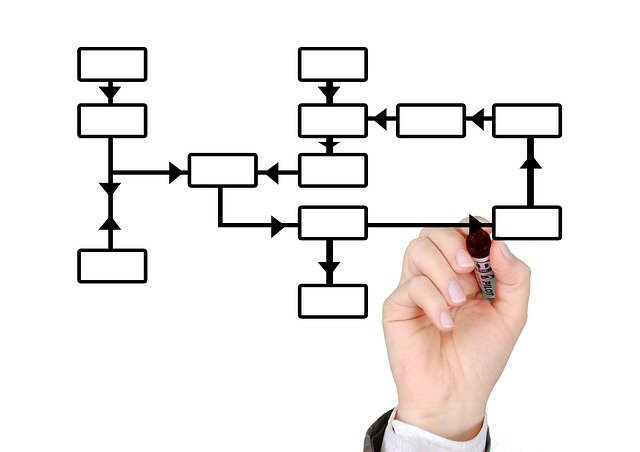Integrating 5S training, rooted in Lean management, is a powerful strategy for transforming workplaces. By focusing on sort, set in order, shine (clean), standardize, and sustain, organizations achieve exceptional workplace organization and efficiency. This system reduces waste, enhances productivity, promotes safety, and boosts employee morale through process standardization and continuous improvement initiatives. Embracing 5S continuous improvement leverages data-driven decisions and fosters a culture of mindfulness, accountability, and pride in maintaining a clean, well-organized facility.
In today’s competitive landscape, maintaining a clean and organized facility is paramount for business success. This comprehensive guide explores an effective cleanliness strategy, centered around foundational principles like 5S training and lean management. By integrating these concepts with continuous improvement through process standardization, organizations can achieve optimal workplace organization. We’ll uncover strategies to sustain a culture of cleanliness and efficiency, ensuring your facility remains a competitive advantage.
- Understanding the Foundation: 5S Training and Its Principles
- Integrating Lean Management for Optimal Workplace Organization
- Implementing Continuous Improvement Through Standardization of Processes
- Strategies for Sustaining a Culture of Cleanliness and Efficiency
Understanding the Foundation: 5S Training and Its Principles

Understanding the Foundation: 5S Training and Its Principles
In today’s competitive business landscape, maintaining a clean and organized facility is not just an aesthetic concern; it’s a strategic imperative that directly impacts productivity, efficiency, and employee morale. At the heart of this strategy lies 5S training, a powerful lean management tool rooted in Japanese production methods. This methodology goes beyond superficial tidiness, focusing on process standardization and continuous improvement. By adhering to the five pillars – Sort (remove unnecessary items), Set in Order (organize for ease of use), Shine (clean thoroughly), Standardize (institutionalize procedures), and Sustain (maintain the system) – organizations can transform their workplaces into streamlined, efficient operations.
5S training isn’t merely about implementing a quick fix; it’s an ongoing commitment to workplace organization. It encourages employees to take ownership of their workspace, fostering a culture of accountability and teamwork. As processes are standardized, teams can identify inefficiencies more easily, leading to continuous improvement and enhanced productivity. In essence, 5S training serves as a foundational strategy for creating a clean, safe, and highly functional facility that supports the overall success of any organization.
Integrating Lean Management for Optimal Workplace Organization

Integrating Lean Management principles is a strategic move for any facility aiming to achieve exceptional cleanliness and overall workplace efficiency. By adopting lean techniques, such as the 5S training methodology, organizations can transform their spaces into highly organized, streamlined environments. The 5S system emphasizes sorting, setting in order, shining (cleaning), standardizing, and sustaining these practices for continuous improvement. This approach ensures that every item has a designated place, reducing waste and clutter, which is essential for maintaining cleanliness.
Process standardization plays a pivotal role in lean management, enabling staff to work more effectively. When tasks are standardized, employees can quickly learn and master them, leading to increased productivity. Moreover, regular 5S continuous improvement initiatives foster a culture of mindfulness and accountability where everyone takes pride in keeping the workplace clean and well-organized. This approach not only enhances aesthetics but also contributes to better hygiene, safety, and overall operational efficiency.
Implementing Continuous Improvement Through Standardization of Processes

Implementing Continuous Improvement Through Standardization of Processes
In today’s competitive business landscape, maintaining a clean and organized facility is not just about aesthetics; it’s a strategic imperative that directly impacts productivity, employee morale, and customer satisfaction. A robust cleanliness strategy must incorporate process standardization as its cornerstone. This involves adopting principles like the 5S training methodology, which emphasizes sorting, setting in order, shining (cleaning), standardizing, and sustaining. By teaching employees these simple yet powerful steps, organizations can achieve a more efficient workplace organization that fosters a culture of continuous improvement.
Lean management techniques complement this approach by identifying and eliminating waste within facility operations. Standardized processes not only ensure consistency but also provide a framework for regular audits and performance evaluations. This allows for the identification of areas needing enhancement and enables data-driven decisions to further optimize cleaning efforts. Ultimately, process standardization is a key driver of 5S continuous improvement, promoting a more streamlined, effective, and engaging work environment.
Strategies for Sustaining a Culture of Cleanliness and Efficiency

Maintaining a clean and efficient facility requires a consistent culture that leverages strategies like 5S training and lean management principles. This involves implementing rigorous workplace organization techniques, where every space is assigned a specific purpose, reducing clutter, and promoting order. The 5S methodology—Sort, Set in Order, Shine (Clean), Standardize, Sustain—serves as a powerful tool for achieving this. By regularly sorting through items, setting them in logical orders, and keeping the environment sparkling clean, staff can identify and discard unnecessary items, ensuring only essential tools and resources are readily available.
Process standardization is another key component that enhances efficiency. Standardized processes ensure tasks are completed consistently, regardless of who performs them, reducing errors and increasing productivity. This discipline, coupled with continuous improvement initiatives, encourages employees to identify inefficiencies and suggest enhancements, fostering a proactive culture where cleanliness and organization remain top priorities.
By integrating 5S training with Lean management principles, organizations can achieve exceptional workplace organization and efficiency. Implementing process standardization and continuous improvement ensures a clean, safe, and productive environment for employees while enhancing operational excellence. Sustaining a culture of cleanliness and efficiency is key to retaining staff, improving morale, and driving business success over the long term.
